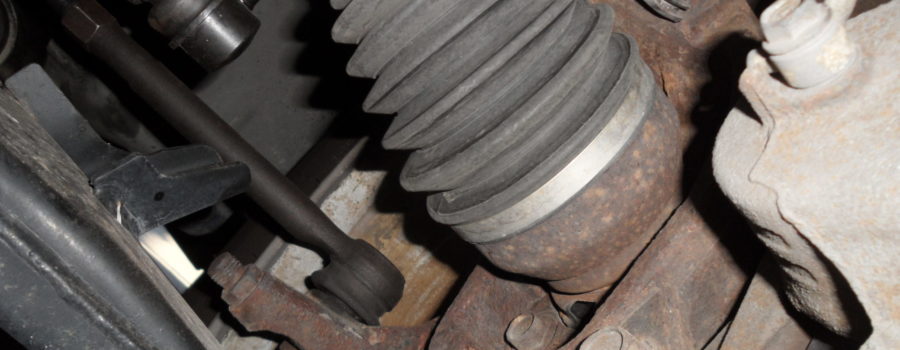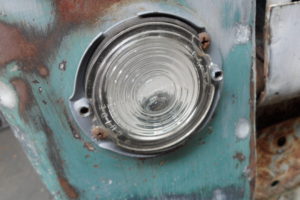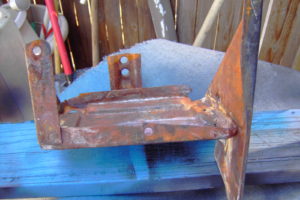I’d like to start by telling you a personal experience when I bought my first crappy used truck and fell for the “polished turd” trick! I learned a VALUABLE hard-learned lesson and I have now honed it into a VALUABLE skill!
FIRST OFF – we are not saying all people who sell used cars are bad! We just want to teach you what to watch for and what to avoid. Hidden details MOST people might overlook if you don’t know what to look for to tell if it’s a lemon or polished turd OR if it is truly a good buy. We are going to cover ALL car dealerships that sell used cars to private citizens and help you through the jungle of truths and fiction!
I didn’t see the red flags waving when I bought my 1978 Chevy 3/4 ton two-wheel-drive crew cab in 1999, I needed something big and strong for work, hauling my mechanic tools around on a construction job. My first problem in seeing the red flags was I wanted a crew cab since I was a teenager. I was also really in love with the idea of a 3/4 ton truck!!! So when the guy wasn’t upfront about details I was asking him about, like – what did HE use the truck for and what kind of work had he put in it. My wife wasn’t impressed at all with his answers OR the truck. But I let emotions blind me because I wanted it! Long story short it was a money pit starting with the day we took it home we realized it desperately needed new mufflers and after he had signed the title over and we had paid him, he mentioned the engine wasn’t the original to the truck it was from a CAR!!! And it had A LOT of miles on the second engine. ALL MY FAULT. I KNOW BETTER and it never happened again! I’ve helped several friends and neighbors find great vehicles and I will help YOU!

A friend of ours Subaru Legacy Sedan we inspected for them before they would buy it.



Carfax is also a useful tool but you have to pay for ANY information on a vehicle you are interested and they even have you sign an agreement that they may not have a complete history of every vehicle. So we will show you what to look at and watch for so you DON”T get screwed.
You may want to write or print this list and take it with you when you go to look at the vehicle. If you want to do this on your own if you don’t have a mechanic handy to help you out. When you closely check out a used car at a dealership or through a private citizen, if they don’t have anything to hide then it shouldn’t bother them that you are looking at key indicators so YOU know how well it’s been taken care of and there won’t be any hidden surprises. You will have to look under the vehicle so dress accordingly and bring some gloves or a cloth to wipe your hands with. And also bring a flashlight, and a pen & paper.
These are things to check BEFORE you do a test drive.
1) Mufflers and or complete exhaust system. PLUS hangers.
You need to look for any broken welds because there might be depending on the year or mileage of the vehicle caused by rust and corrosion and poor maintenance Just touch the tailpipe or anywhere on the exhaust plumbing and try to move it. If it doesn’t move or make noises you’ve got a good system but still do a visual inspection of the muffler and catalytic converter for any holes from any road damage. Then check the rubber exhaust hangers if the vehicle has them and be sure it has all the hangers it had from the factory and they are all in fair shape.

Exhaust pipes! Header pipe pictured

Exhaust header with the front bank O2 sensor

Hangers are needed to hold your exhaust system up and away from harm and straight to the engine and other exhaust features for a smooth-sounding car. And no leaks for any inspection time.
2) Shocks and struts.
When inspecting your shocks or struts, you will be looking for any fluid leakage from the shocks or struts by visual inspection first then you will be looking at mounts at the top and the bottom and looking for rust around mounting bolts. If there is rust, it is one sign they may have not been changed. Also if the boots on the front struts are not connected to the shock body this is a sign of wear and will have to be replaced.

The front right strut seems good no damage.

Rear Shock with Driveshaft in the picture right side.

Rear Shock with the drive shaft in the picture left side.

The front left strut seems in good condition.
3) Cv-axels plus boots.
Now, this is vital! This part can also be done while inspecting your shocks and struts. The axles are a nightmare if they go out because they are very dangerous if not caught early! The cv-axles are located right behind each wheel right next to the struts and shocks if it is an all-wheel-drive vehicle. Now the rubber boots on these cv-axels have to be inspected visually around the whole surface of each boot, between each clamp holding the boot on. While looking, inspect for any cracks or holes and check the rubber boot for age and dryness from weather conditions and hard mileage.




4) Engine cradle inspection.
This inspection will take you a little deeper so have a good working flashlight with you to do this inspection. What you are inspecting in the engine cradle is ANY signs of previous accidents that may have happened and the repairs may have been done poorly. Looking closely at ANY bent metal or steel that looks like it’s out of place or needs attention. Also, while in the engine cradle you can look at any fluid leakage anywhere around the engine or transaxle that has leaked on the cradle for a long period. Then you can take your flashlight look up to where the oil pan mounts to the engine, look to see if there has been any silicone sealer applied to the oil pan to stop a leak. BELIEVE IT OR NOT, I saw this one with my own eyes. this would have been such a nightmare for our neighbor if I hadn’t caught it! AND she wanted that car. REMEMBER to try to take your emotions out of the equation. If this vehicle is automatic, inspect the fluid pan on it also for any silicone sealer. This would show you as I would call it, a bandaged repair. Also, while you are on the underside of the engine, take a glance at the engine and transmission mounts for any signs of wear or if they have been changed. This would be noticeable if the bolts are shiny and clean but if not the rubber in the mount would be cracked or torn and showing old age.

Residue can show you if this vehicle has had previous engine leakage problems by repairs or something else?

Leaks are not something every person knows what it is or how to fix it. But finding it is the first challenge.

The coolant overflow tank is located on most car fenders. And still needs looking at because it can be an expensive repair.
Now you can come up to the topside! And now you’ll want to look at the vital signs that keep the vehicle running like a clock!
1) Do a walk around and check to make sure all the brake, reverse, tail & headlights are in working order.
2) Check all rubber hoses for cracking or brittle from not having been replaced and WILL fail sooner than later.
3) Check the serpentine belt(s). While checking it out, if you can touch the belt and turn it and it is flexible, turn it and look at the ribs on the underside for cracking and the depth of the ribs would show how worn down they are and this would cause squeaking and would cause it to start slipping and not operating the accessories on this engine as it was made to do.
4) Check battery and connections. If the battery happens to have plastic battery post covers, it’s ALWAYS a good idea to pop those open to take a look at the condition of the connections. If there is a lot of acid build-up and corrosion it’s another sign of poor maintenance. Also, it could show that the battery has been neglected if it is low or if there is no water in it. Battery or connection replacement is costly and you could maybe have them foot the bill for it before you make a deal about the vehicle.
5) Checking all fluids. What you’re looking for with each.
MOTOR OIL – look for the color, smell, and feel. The color should be almost see-through on the dipstick. The smell, you SHOULDN’T smell is burnt or black, that would mean it burns through and is on a fast track for MAJOR problems! The feel, touch the oil between index finger and thumb. It should feel smooth. If you feel sharp and gritty then that means there are possibly steel shavings in the oil pan, which is also NOT a good sign.
TRANSMISSION FLUID – most have a color tint to them but it is a hydraulic fluid and the same tips apply to the trans fluid as the motor oil. Color, smell, and feel. So, color can be anything BUT BLACK. If it is black, they’ve burnt the transmission up. And with the black color, it would also smell burnt which is the next clue you’re looking at. As for the feel, put it between your fingers again if it is smooth you are good to go if it’s gritty WALK AWAY.
COOLANT – As with the others, it has its unique color. Most are green or pink. Seeing through the radiator cap or the reservoir bottle you can tell if it is bad. If it is brownish it possibly has rust and corrosion within the system starting with the radiator, heater core, or water pump and thermostat. This may all be caused by not only a failed part but also failed gaskets and the system not being flushed out regularly. If it smells hot, it is low on coolant. The touch is slippery with coolant but if there is rust and no signs of ever being flushed it would have a gritty yucky feeling between your fingers.
BRAKE FLUID – The same rules apply with brake fluid as it does with the others. With brake fluid, it’s mostly color and smell. If there is a burnt smell in the car’s brake system either the owner has neglected the brake system or has been riding them. Which will lead up to big brake repairs to all four wheels much earlier than you would expect. The color should be mostly clear when looking at your master cylinder. Be advised when opening the master cylinder to check the color, if it has a grayish color or looks foamy then it has moisture in it and air. And that is even a more clear sign of something you don’t want to have to deal with.
Now, on to tires. You will be looking closely at your tires inside and out for any sidewall bulging, and what sidewall bulging, is a sign of cord separation where the owner may have hit too many curbs or other obstacles with the sidewalls and caused this damage. Also, you will be looking at the tread of the tire and you will also look at this tread in between the tread design. This would be caused by heat and weather conditions or the vehicle had been sitting too long and they never bothered to replace them. With tire safety, it’s not a laughing matter! These things can blow like a grenade and be very fatal if driven in this condition. The Ideal tread depth is no less than 2/32’s. It’s also safe enough to get you by till you can replace them at a later date
Now that we are done with the checklist we would just like to relate a couple more examples to be on the lookout for. We have seen it first hand. On one occasion a dealership had detailed the engine bay. It looked SO NICE AND SHINY! But when I pulled the plastic battery covers off the posts, there was a lot of battery acid and corrosion which the “detailing” of the battery was overlooked. This made me more suspicious so when I looked under the engine I found a lot of leaking from the a/c unit and most of the a/c system. Then I found a bad radiator hose, a bad exhaust and it was missing 2 hangers and also 2 cv axles that needed to be replaced in the front. They liked this vehicle but I helped them realize it was a “shiny detailed” money pit.

A dirty battery can lead to bigger problems for you. Not all know how to do or want to.

Battery maintenance is key to a great running car now and down the road later.
Take some time, do your homework, take the checklist and TRY to leave the emotion out of the decision. YOU CAN DO IT!




Hoping this helps you all. Happy shopping!





